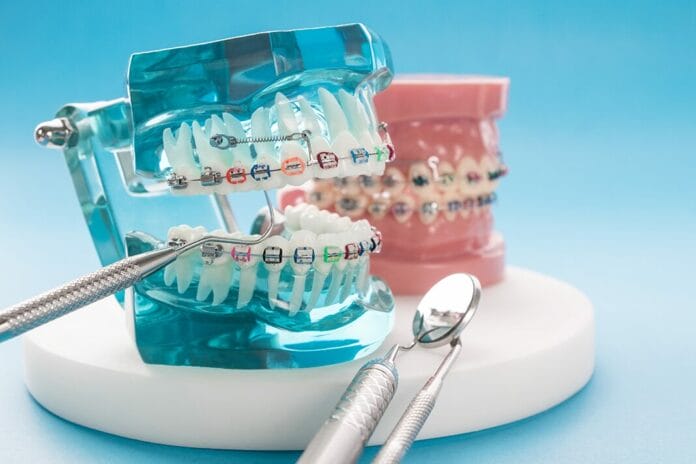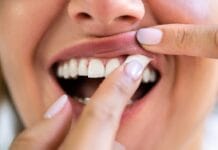If you walk into any school in the United States, chances are you will be greeted by children in orthodontics. While I was fortunate to have orthodontic treatment in my teenage years, it was a rarity for children in my school to have orthodontics. However, now it’s almost an accessory. The curiosity of how we got here led me down a rabbit hole to the very beginning.
Archeologist evidence suggests that orthodontics date back thousands of years ago. Findings reveal that the ancient Egyptians wrapped metal around individual teeth connecting to catgut, a cord made of sheep or horse intestine, simulating an archwire used in modern orthodontics.1,2 It is speculated that this was an attempt to correct alignment.2
The Greek physician Hippocrates gave the earliest description of teeth irregularities, including crowding, around 400 BC.2,3 The first recorded treatment of an irregular tooth was by the Roman medical writer Aulius Cornelius Celsus (25 BC-50 AD).2-4 Celsus wrote that when a permanent tooth erupted before a primary tooth exfoliated, the primary tooth should be extracted. Then, the permanent tooth “must then be pushed with the finger, day by day, toward the place that was occupied by the one extracted; and this is to be continued until it reaches its proper position.”3,4
The French Influence
In France, students of dentistry were admitted to a university as early as 1580. Exclusively practicing dentistry was first mentioned by Pierre Dionis (1658-1718), who called dentists “operators of the teeth” and said they could also “open or widen the teeth when they are set too close together.”2 At this time, malocclusions were called teeth “irregularities,” and correcting them was termed “regulating.”2
France became the leader in dentistry in the 18th Century, mainly due to Pierre Fauchard, referred to as the “Founder of Modern Dentistry.” In 1729, he wrote about orthodontics and ways to straighten teeth in his book The Surgeon Dentist: A Treatise on the Teeth.3
Pierre Fauchard also invented what is likely the first orthodontic appliance called the “bandelette,” designed to expand the arch, particularly the anterior teeth.2-4 The bandelette was the forerunner of the expansion arch used today.3
Fauchard used gold and silver plates, perforated with holes and held in place with silk wires to correct irregularities. Fauchard also writes that when this method was not sufficient to straighten teeth, he forced teeth in place with forceps.2-4
Another French man and dentist to the King of France, Etienne Bourdet (1702-1788), advocated Fauchard’s method and added his own theory and technique. Bourdet recommended the extraction of the first premolars to preserve the symmetry of the jaw and by extracting mandibular first molars in children with a prognathic mandible.3
A design very similar to the modern form of braces we all know was created in 1819 by Christophe-Francois Delabarre. Delabarre is credited for devising a woven wire “crib” fitted on both upper and lower teeth worn for a dedicated length of time.1
Orthodontics in the United States
E.J. Tucker, a Boston dental surgeon, advocated the use of elastics for tooth movement in 1853. Dr. Tucker stated, “The exact position of the teeth, the lines of force to be observed and the tenacity of the power exerted, are all considerations requiring study and a careful judgment.”3
The dentist, artist, and orthodontist Norman W. Kingsly is associated with the technique of “jumping the bite” using a bite plate for a protruded maxilla, not necessarily with extractions. He emphasized the importance of shaping dental arches to be in harmony with each other and that the relationship between mechanics and biology is the principle on which orthodontics should be based.3
In 1880, Dr. Kingsly published A Treatise on Oral Deformities as a Branch of Mechanical Surgery, which was used as a textbook for several years. His book was the first to recommend that etiology, diagnosis, and treatment planning were the acceptable bases of practice. Dr. Kingsly believed that successful treatment depends on a correct diagnosis and prognosis.3
The “Father of Modern Orthodontics,” Edward Angle, taught orthodontics in several dental schools in the 1880s. Because he could not convince dental schools to form a separate department for orthodontics, he opened the Angle School of Orthodontia in 1900.4,5
Dr. Angle continued to enrich the role of orthodontics with the first classification of malocclusion, which enabled orthodontists the ability to describe the extent of irregular bites. Notably, Dr. Angle strongly opposed extracting teeth as part of orthodontic therapy. The Angle’s Classification of Malocclusion is still used today.4
In 1908, Charles Hawley introduced the first retainer that bears his name, Hawley Retainer. Dr. Hawley used a celluloid sheet with a geometric figure that determined the extent of proposed tooth movement when adapted to a model.4
Orthodontics Defined
It wasn’t until the latter part of the 1900s that this field of dentistry was given attention as a specialty and was initially referred to as orthodontia. Orthodontics was first defined in 1911 by Dr. Dean Noyes as “the study of the relation of the teeth to the development of the face and the correction of arrested and perverted development.”4
During the next two decades, the education of orthodontics began to accelerate. Martin Dewey addressed the New York Society of Orthodontists, where he recommended a short eight to ten-week course for general dentists desiring to practice orthodontics and a course of a year or more that would lead to a master’s degree. In the 1920s, a postgraduate education became necessary for dentists who wanted to practice orthodontics.5
However, it was not until the 1960s that the discussions on how orthodontics should be taught were settled, with 33 out of 47 dental schools offering graduate or postgraduate orthodontic education.5
The definition of orthodontics developed over the years and was later defined by the American Association of Orthodontics (AAO) as “the specific area of dental practice that has as its responsibility, the study and supervision of the growth and development of the dentition and its related anatomical structures from birth to dental maturity, including all preventative and corrective procedures of dental irregularities, requiring the repositioning of teeth by functional or mechanical means to establish normal occlusion and pleasing facial contours.”4
Continued Progress
Orthodontics has continued to progress, and technology has provided unique opportunities. In 1997, two students from Stanford, Zia Chishti and Kelsey Wirth, together with a computer specialist, used computer technology to create a clear aligner system and founded Align Technology. Aligners negate the need for wires and brackets and are more cosmetically pleasing.6
While many likely assume orthodontics are intended for adolescents, statistics reveal that adults are seeking treatment, too. According to the American Orthodontics Association, one in three orthodontic patients are adults.7 The rise in adult treatment is due to the increase in knowledge of dental care and the desire to improve dental aesthetics.8
In 2023, the global market for orthodontics was valued at $7.21 billion. It is projected to grow from $8.45 billion in 2024 to $44.81 billion by 2032.8
In Closing
Parents of patients or adult patients may be unaware of how malocclusion or teeth misalignment can negatively affect their oral health. Educating patients and providing orthodontic referrals can help to initiate beneficial treatment. If orthodontic treatment is necessary, dental hygienists can help provide directions on proper oral care instructions throughout treatment.
Orthodontics has progressed significantly through the decades. Correcting malocclusion and misalignment can help improve oral health, including reducing the risk of dental caries, periodontal disease, and temporomandibular joint disorders. Orthodontic treatment can also aid in airway health and improve self-confidence.
Before you leave, check out the Today’s RDH self-study CE courses. All courses are peer-reviewed and non-sponsored to focus solely on high-quality education. Click here now.
Listen to the Today’s RDH Dental Hygiene Podcast Below:
References
- The History of Orthodontics: From Ancient Braces to Clear Aligners. (2021, February 18). Australian Society of Orthodontists: Orthodontics Australia. https://orthodonticsaustralia.org.au/the-history-of-orthodontics-from-ancient-braces-to-clear-aligners/
- Wahl, N. Orthodontics in 3 Millennia. Chapter 1: Antiquity to the Mid-19th Century. American Journal of Orthodontics and Dentofacial Orthopedics. 2005; 127(2): 255-259. https://pubmed.ncbi.nlm.nih.gov/15750547/
- Asbell, M.B. A Brief History of Orthodontics. American Journal of Orthodontics and Dentofacial Orthopedics. 1990; 98(2): 176-183. https://citeseerx.ist.psu.edu/document?repid=rep1&type=pdf&doi=81ab2e4f59b5160e64c0365d6ac7a372bc1e3b18
- Phulari, B.S. (2013). History of Orthodontics. Jaypee Brothers Medical Publishers. https://books.google.com/books?id=UNNhyMz_fowC&printsec=frontcover#v=onepage&q&f=false
- Will, L.A. The History of Orthodontic Education: A Century of Development and Debate. American Journal of Orthodontics and Dentofacial Orthopedics. 2015; 148(6): 901-913. https://www.ajodo.org/article/S0889-5406(15)01058-6/fulltext
- Galan-Lopez, L., Barcia-Gonzalez, J., Plasencia, E. A Systematic Review of the Accuracy and Efficiency of Dental Movements with Invisalign. Korean Journal of Orthodontics. 2019; 49(3): 140-149. https://www.ncbi.nlm.nih.gov/pmc/articles/PMC6533182/
- Adult Orthodontics: Embrace Your Smile at Any Age. (n.d.). American Association of Orthodontists. https://aaoinfo.org/adult-orthodontics/
- Orthodontics Market. (2025, February 10). Fortune Business Insights. https://www.fortunebusinessinsights.com/industry-reports/orthodontics-market-101587










